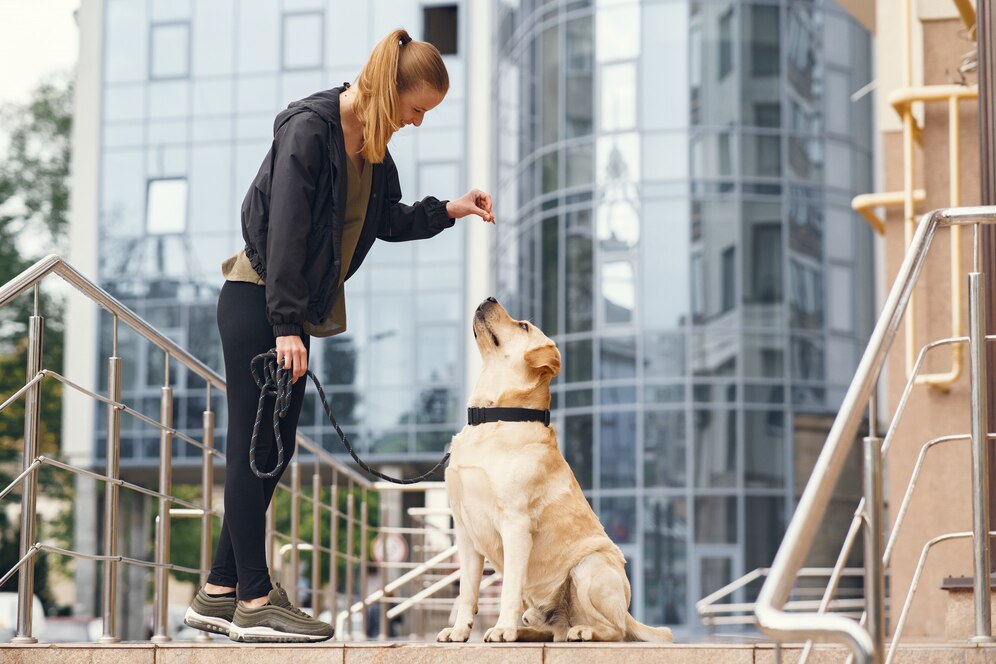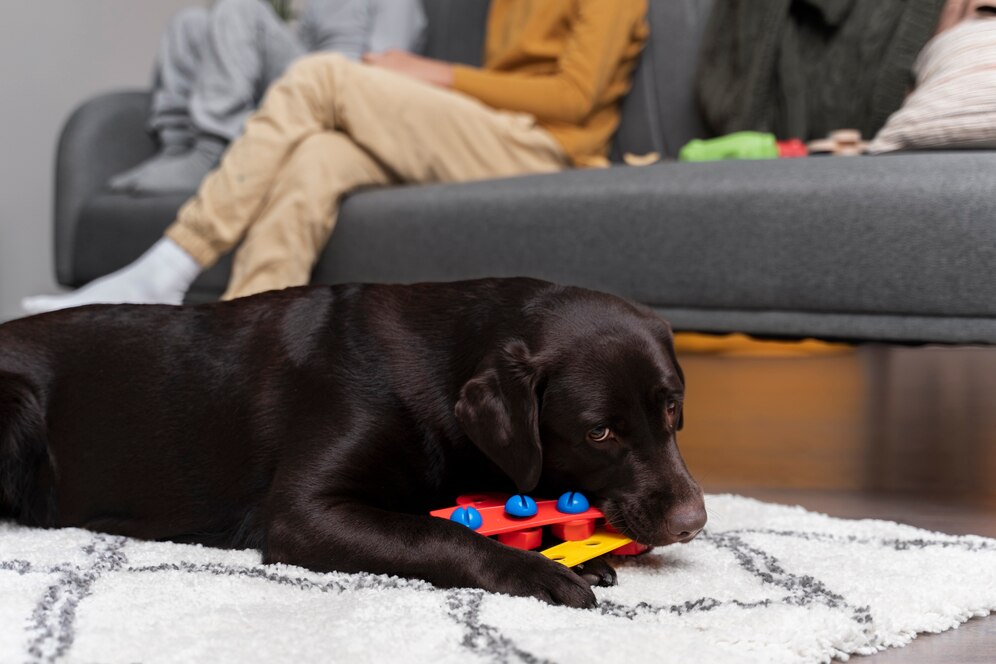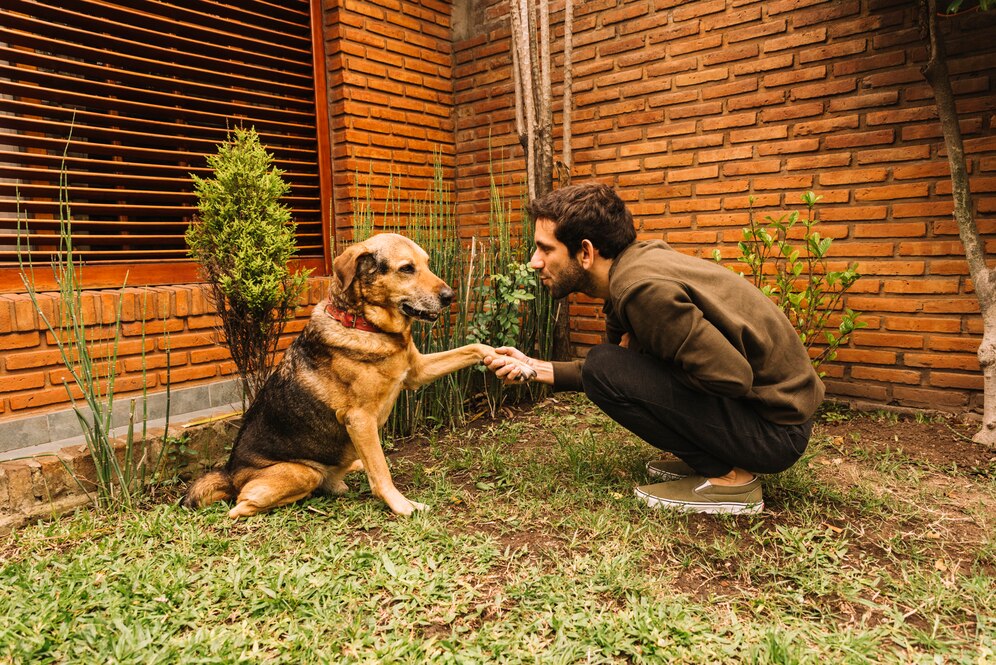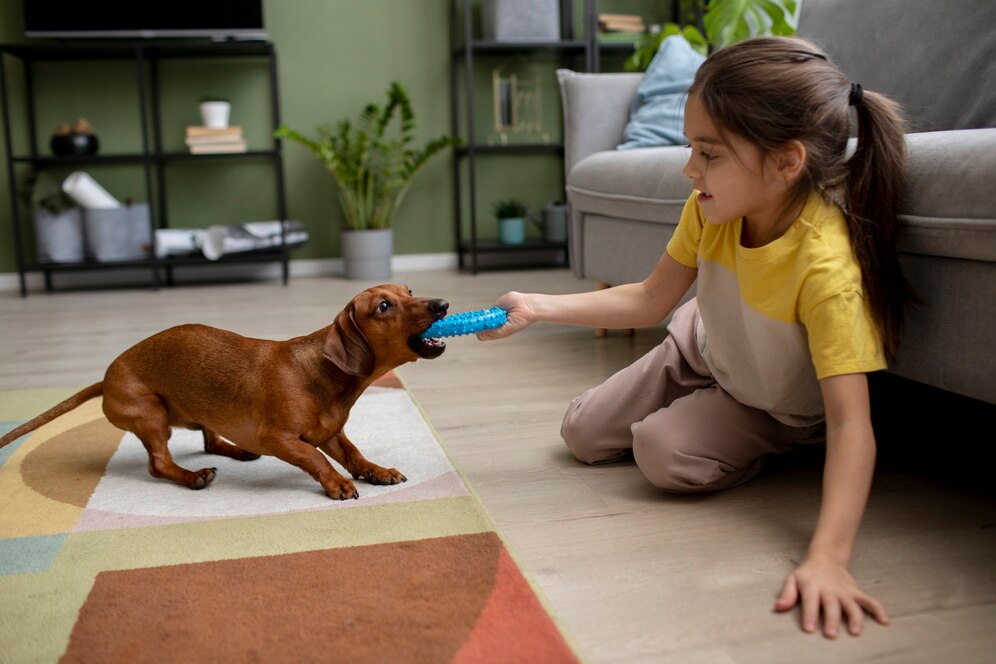Blog
Tips to Boost Your Dog’s Intelligence with 7 Unique Toys
Dogs, with their wagging tails and boundless energy, are beloved companions enriching our lives in countless ways. However, beyond their playful antics lies a fascinating world of canine cognition. Our furry friends can learn complex commands, solve problems, and even understand human emotions – all thanks to their remarkable intelligence. This article delves into the Tips to Boost Your Dog’s Intelligence with 7 Unique Toys, exploring how mental stimulation is crucial for your dog’s cognitive health and wellbeing.
Mental stimulation plays an essential role in keeping dogs happy and well-adjusted. A stimulated mind leads to a happier, healthier dog, enhancing their quality of life. Engaging with specially designed toys can significantly improve your dog’s cognitive function while providing them with entertainment and exercise. Let’s dive into some unique toys that can unleash your dog’s inner genius and foster a deeper bond between you.
The Importance of Mental Stimulation for Dogs
Understanding why mental stimulation matters for dogs is the first step in enhancing their intellectual capabilities. Just as humans benefit from challenges to keep their minds sharp, dogs require cognitive engagement to thrive.
>>> Buy now: Dog’s Intelligence
Reducing Boredom and Frustration
A bored dog is often a destructive dog. Without appropriate mental stimulation, dogs can become restless and anxious, engaging in behaviors like chewing on furniture, barking excessively, or digging. By providing stimulating activities, we help channel their energy positively, keeping them mentally occupied.
Boredom can lead to a range of behavioral issues that may strain the human-animal bond. When dogs engage in destructive behaviors, owners may become frustrated, leading to a negative cycle. Therefore, introducing stimulating toys not only entertains but also preserves the happiness of both dog and owner.
Furthermore, toys that challenge a dog’s intellect can transform boredom into excitement. For instance, treat dispensing puzzles captivate dogs’ attention, allowing them to focus on problem-solving instead of resorting to destructive behaviors.
Enhancing Problem-Solving Skills
Interactive toys often require dogs to use their problem-solving abilities to access treats or rewards. This process strengthens their cognitive flexibility and improves their ability to adapt to new situations. Emphasizing intellectual challenges in play fosters an environment where dogs can learn and grow.
As dogs tackle different challenges presented by these toys, they sharpen their mental acuity. Not only do they develop skills applicable to the toy at hand, but they also gain confidence in their abilities. This newfound confidence can extend beyond playtime, influencing their interactions and behavior in various situations.
Additionally, working through puzzles engages a dog’s natural curiosity and instinct to explore. As they manipulate toys, they learn to think critically, making connections between actions and outcomes.
Strengthening the Bond Between You and Your Dog
Engaging in interactive play sessions involving mentally stimulating toys strengthens the bond between you and your dog. The shared experiences foster trust, communication, and understanding, essential components of a healthy relationship.
When we participate in activities that challenge our pets, we enter their world, recognizing their needs for stimulation and engagement. This collaboration creates lasting memories and positive associations. Over time, both you and your dog will look forward to these bonding moments, further solidifying your connection.
Moreover, as you guide and assist your dog in solving puzzles, you demonstrate your investment in their welfare. This involvement nurtures a sense of security in your dog, reinforcing the idea that their owner is there to support them.
Unique Toys to Spark Your Dog’s Brilliance
Now that we’ve established the significance of mental stimulation, let’s explore seven unique and engaging toys that can help unlock your dog’s inner Einstein.
Treat Dispensing Puzzle Toys
Treat dispensing puzzle toys come in various shapes and sizes, offering an engaging way to stimulate your dog’s mind while rewarding them with their favorite treats. These toys challenge dogs to figure out how to extract the treats through mechanisms like sliding panels, rotating discs, or complex mazes.
These toys prove beneficial in several key ways. First, they encourage problem-solving, requiring dogs to think creatively and use their paws or noses to manipulate the toy and release the treats. This active engagement enhances their cognitive development, fostering an inquisitive mindset.
Furthermore, these toys slow down eating, which is especially advantageous for fast eaters. By encouraging dogs to interact with the toy to obtain food, we promote mindful eating behaviors. A more gradual approach to meals can prevent digestive issues, ensuring overall health and wellbeing.
On top of that, treat dispensing toys provide mental stimulation that keeps dogs entertained for extended periods. They offer a perfect solution for combating boredom when owners are busy or away from home.
Examples of Treat Dispensing Puzzle Toys
Kong: A classic treat-dispensing toy with a hollow center that can be filled with treats, kibble, or peanut butter. Its durable design ensures hours of entertainment.
Toppl: A multi-functional toy with interchangeable parts that allow you to create various difficulty levels. This adaptability makes it a favorite among pet owners.
Bob-A-Lot: A fun and interactive ball that dispenses treats as your dog plays. Its wobbling motion adds an element of unpredictability, increasing engagement.
Interactive Food Puzzles
Interactive food puzzles are similar to treat dispensing toys but typically involve more intricate designs and a wider array of challenges. These puzzles require dogs to use a combination of their nose, paws, and problem-solving skills to access hidden food compartments or release treats.
The complexity of interactive food puzzles presents an exciting challenge for dogs. They mentally engage with the toy, strategizing how best to achieve their reward. This level of engagement promotes cognitive flexibility, encouraging dogs to think outside the box and adapt to ever-changing obstacles.
Moreover, successful completion of these puzzles fosters a sense of achievement in dogs. When they overcome challenges, they gain confidence in their abilities, leading to a more positive disposition.
To maximize the benefits of interactive food puzzles, consider the varying levels of difficulty available. Gradually increasing the challenge can enhance the mental workout provided to your dog.
Examples of Interactive Food Puzzles
Nina Ottosson Outward Hound Dog Puzzle Toys: A range of challenging puzzles with different levels of difficulty, catering to dogs of all skill levels.
StarMark Bob-A-Lot: A spinning, interactive ball that dispenses treats as your dog plays, combining movement with problem-solving.
Triol Dog Treat Puzzle: Designed with multiple compartments and various levels of challenge, making it ideal for dogs who enjoy a good brain workout.
Hide-and-Seek Games
Hide-and-seek is a classic game that can be highly stimulating for dogs. It taps into their natural instincts to forage and search, providing a fun and engaging way to exercise their cognitive skills.
Playing hide-and-seek stimulates dogs’ innate hunting instincts, sparking their curiosity and engagement. As they scour the environment for hidden treasures, they hone their scent detection abilities, sharpening their olfactory senses.
Strengthening the bond between you and your dog occurs organically during hide-and-seek games. Participating together fosters trust and mutual enjoyment, making playtime a cherished experience.
To effectively play hide-and-seek, hide treats or toys around your house or garden, then use verbal cues like “Find it!” or “Go seek!” to guide your dog. Gradually increase the difficulty of the hiding spots to keep things challenging and exciting.
How to Play Hide-and-Seek
Start with simple hiding spots, such as under a couch or behind a chair, before gradually moving to more challenging locations.
Reward your dog with praise and affection when they successfully find the hidden items, reinforcing positive behavior.
Change up the hiding spots regularly to maintain your dog’s interest and excitement.
Snuffle Mats
Snuffle mats are specifically designed to mimic the natural foraging behaviors of dogs. These mats are covered with various fabrics, flaps, and loops that hide treats and kibble, allowing dogs to use their nose and paws to uncover hidden rewards.
Encouraging natural foraging behavior, snuffle mats provide a healthy outlet for dogs’ instincts. This activity mimics ancestral behaviors, letting them engage in an enjoyable, instinctual practice.
Moreover, using a snuffle mat reduces stress and anxiety. The act of foraging triggers calming effects in dogs, promoting relaxation. This can be particularly beneficial for dogs prone to anxiety or living in stressful environments.
In addition, snuffle mats help slow down eating, preventing overeating and promoting better digestion. As dogs work to uncover their food, they take their time, improving their overall eating habits.
Examples of Snuffle Mats
Kong Snuffle Mat: A popular and effective snuffle mat made from durable materials, designed for long-lasting use.
Petstages Snuffle Mat: Features various textures and fabrics to engage dogs’ senses, enhancing their foraging experience.
DIY Snuffle Mat: Creating a simple snuffle mat can be done at home using old t-shirts, blankets, or towels, making it an affordable option.
Training Toys with Interactive Features
Training toys with interactive features incorporate learning elements into their design, promoting engagement and cognitive development. These toys typically feature lights, sounds, or buttons that dogs can interact with to receive rewards or positive reinforcement.
One significant advantage of these toys is their ability to facilitate training. Making training fun and interactive encourages dogs to learn new tricks and commands. Keeping dogs engaged during training sessions helps reinforce desired behaviors.
Additionally, the need to understand the rules and sequences associated with these toys challenges dogs’ cognitive abilities. As they learn to associate specific actions with rewards, their overall intelligence improves.
These toys also build focus and attention, as dogs must concentrate on the interactive elements to succeed. The consistent practice associated with these toys can enhance obedience and responsiveness to commands.
Examples of Training Toys
Cleverpet: A technology-driven toy that dispenses treats based on a dog’s correct responses to prompts, integrating tech into playtime.
Nina Ottosson Dog Tornado: A challenging puzzle toy emphasizing interactive play while reinforcing desired behaviors.
Interactive Treat Dispensing Balls: Often combined with training exercises, these toys reward desired actions with treats, making training enjoyable.
Agility Equipment
Agility equipment offers a fun and stimulating way to challenge your dog’s physical and mental abilities. With various obstacles such as tunnels, jumps, weave poles, and teeter-totters, agility tools encourage problem-solving, coordination, and physical exertion.
Participating in agility training develops physical fitness and coordination. As dogs navigate the various obstacles, they enhance their muscle strength, stamina, and agility—vital components of overall health.
Additionally, agility courses promote mental stimulation as dogs devise strategies to navigate the course. This cognitive engagement keeps their minds sharp and active, preventing cognitive decline as they age.
Moreover, agility training can turn into a fantastic bonding experience. Working together as a team fosters trust and cooperation, strengthening the relationship between you and your dog.
Setting Up Agility Equipment
Create an obstacle course in your backyard or outdoor space, incorporating tunnels, jumps, and weave poles for variety.
Gradually introduce each obstacle to your dog, allowing them to familiarize themselves with the equipment.
Use positive reinforcement to encourage participation and celebrate milestones along the way.
In conclusion, the journey to unlocking your dog’s inner Einstein begins with understanding the importance of mental stimulation. Engaging your pup with Tips to Boost Your Dog’s Intelligence with 7 Unique Toys provides a multifaceted approach to enhancing their cognitive abilities while nurturing your bond.
Through treat dispensing puzzle toys, interactive food puzzles, hide-and-seek games, snuffle mats, training toys with interactive features, and agility equipment, you have a wealth of options for stimulating your dog’s mind. Each toy serves as a tool to enrich your dog’s life, promoting problem-solving skills, reducing anxiety, and preventing boredom.
Ultimately, the goal is to create an environment where your dog can flourish, both mentally and emotionally. By investing time in activities that challenge and engage them, you’re not only contributing to their happiness but also deepening the bond between you. Happy playing!
>>> Read more: Should Families with Young Children Get an Eskimo Dog




